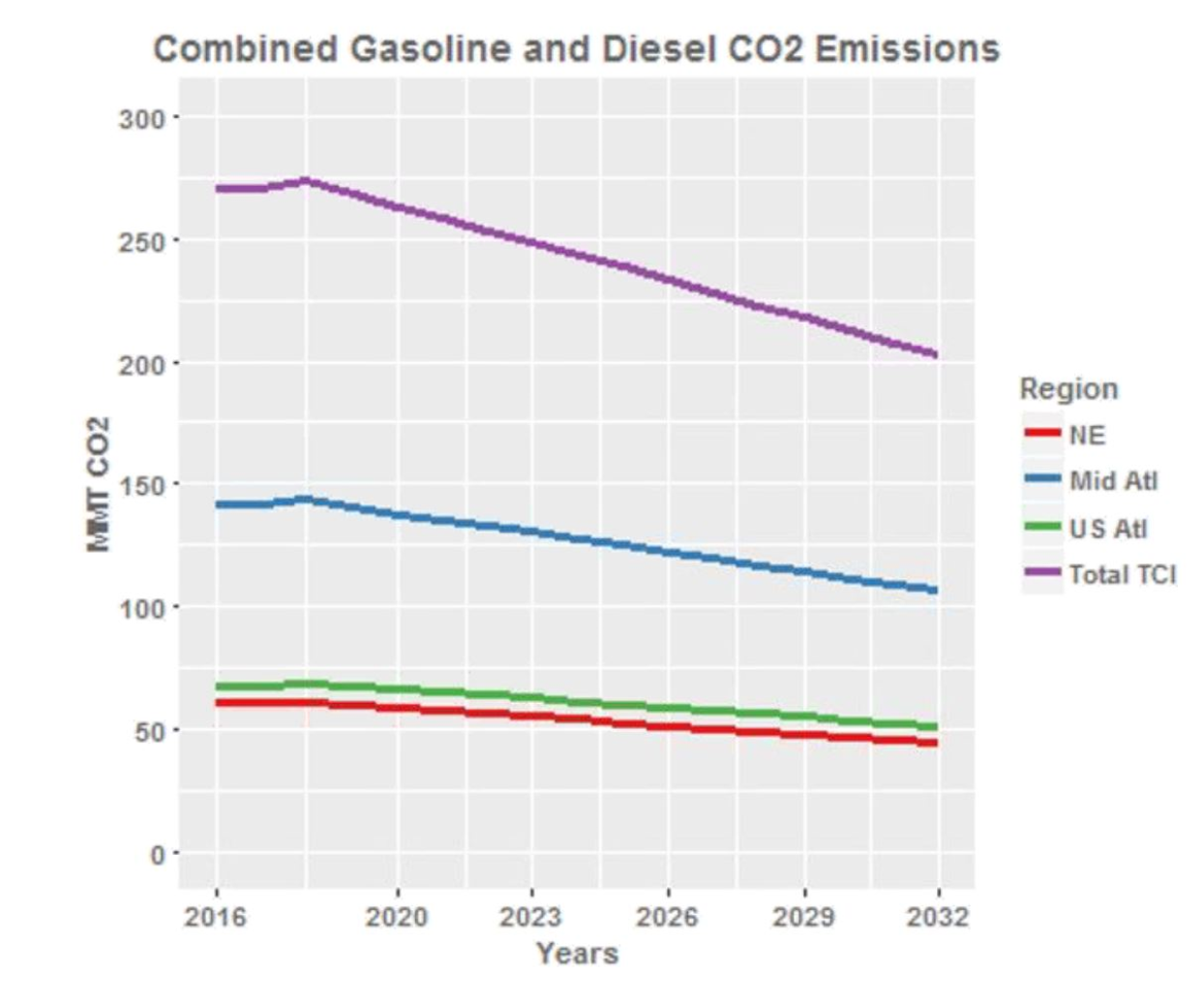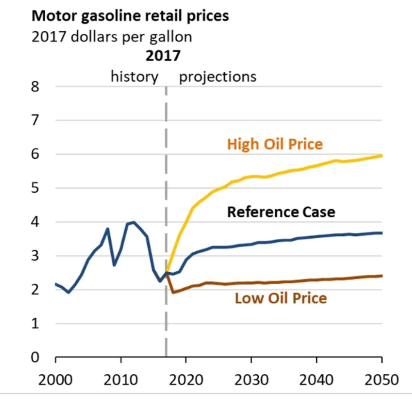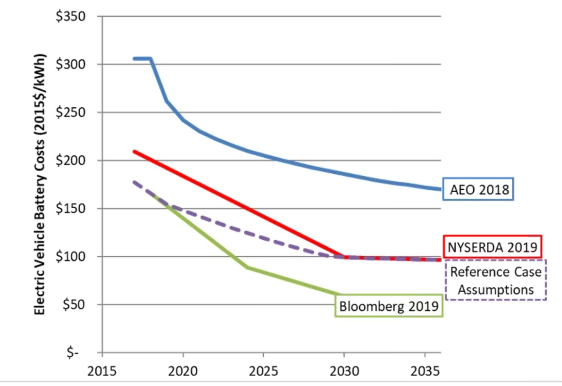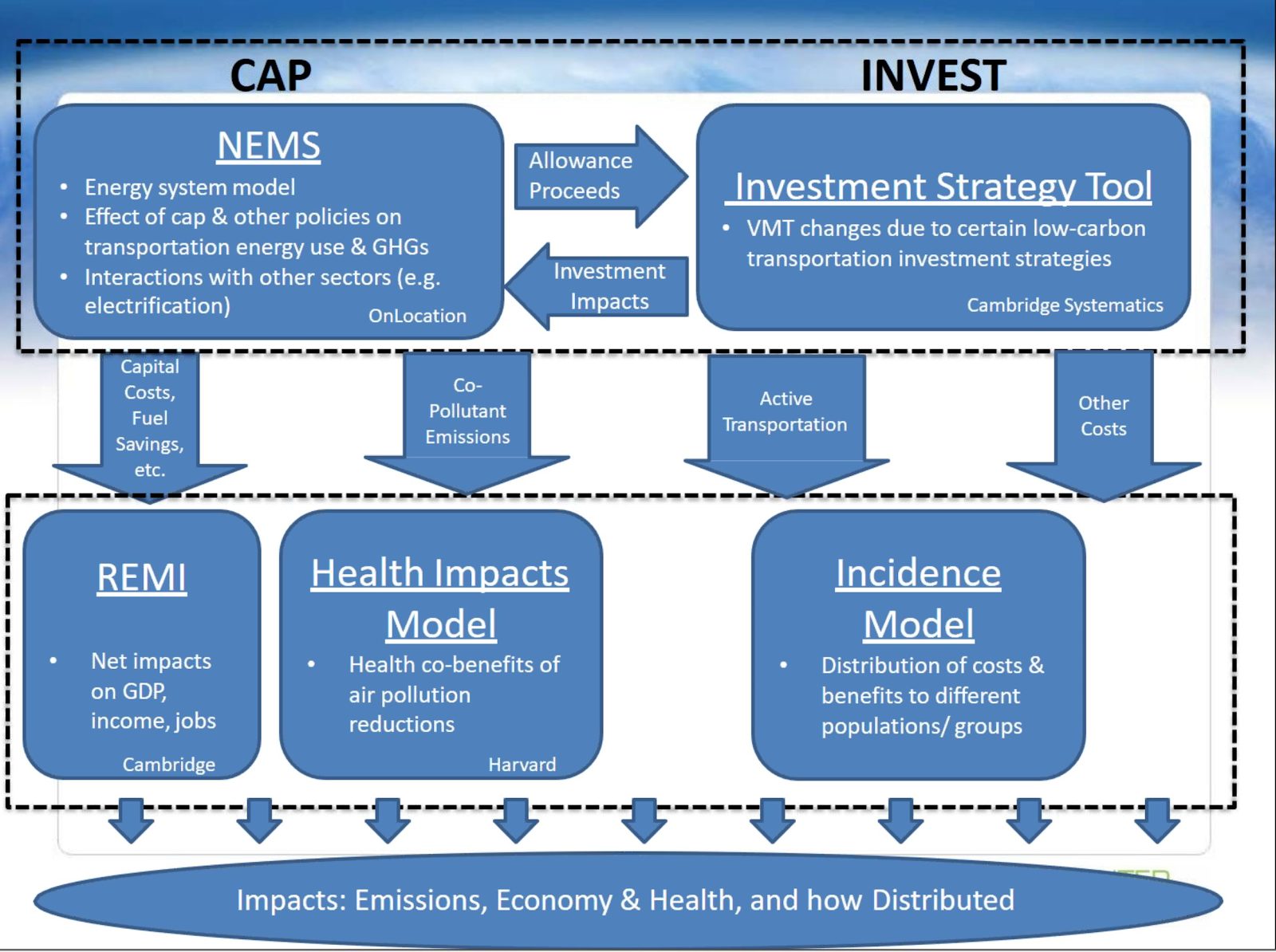The Transportation Climate Initiative is one step closer to becoming a reality. This past Thursday, modeling experts released their prediction of what GHG emissions from transportation will look like in the Northeast and Mid-Atlantic, absent a cap-and-invest program.
Not familiar with the Transportation Climate Initiative? Check out our other articles:
TCI Drives East Coast Emissions Reductions (April 11)
Mixed Concerns from Equity Groups at Latest TCI Workshop (May 2)
Business-as-Usual: How TCI can learn from RGGI and WCI in its modeling exercises (May 24)
Transportation Climate Initiative Conversations Continue in Baltimore (August 1)
The exercise first kicked off about three months ago, when TCI leadership encouraged input on what assumptions to use in their “baseline scenario” for what we can expect to happen in the sector in the next 15 years.
This is a pivotal moment that will dictate how the program is ultimately designed in the coming months. In their negotiations moving forward, state leaders will look to balance the need for ambitious climate action with their fears of imposing carbon prices higher than their constituents are comfortable with. The data in this reference case forms the basis of that conversation, so let’s dive into the results.
Transportation emissions will decrease, but not fast enough
Modelers found that transportation emissions in the region will fall by roughly 20% between 2022 and 2032, primarily due to fuel efficiency improvements and increased electric vehicle (EV) sales.
 Source: TCI Webinar: Reference Case Results
Source: TCI Webinar: Reference Case Results
EV cars will start to proliferate as they become more competitive on the auto market. By 2030, most light-duty EVs will be cheaper than conventional vehicles, constituting about one-third of light-duty vehicle (LDV) sales by 2032.
Meanwhile, Corporate Average Fuel Economy (CAFE) standards will guide our fuel efficiency upward, reducing gasoline consumption in our conventional vehicle fleet (Read below for more on how this could play out).
These are great contributors to our climate goals, but don’t go far enough. The projections in this model bring us to about 29% below 2005 transportation emissions by 2032, meaning TCI may need to achieve an additional 11%-16% reduction to keep the states collectively on track for an 80% reduction by 2050. Each state will need to closely examine what contribution TCI will have to their respective goals.
All of this is a “best guess”
How were these results calculated? By making informed assumptions about how society will change in the future. In particular, there are three key assumptions made for the model that have a significant impact on results:
1. Increasing fuel prices
Based on existing studies, the TCI model chose to assume that gas prices rise about 1.2% per year, while diesel prices rise 1.3% per year. However, there is a great deal of uncertainty as to what future oil prices will be.
 Source: TCI Webinar: Reference Case Results
Source: TCI Webinar: Reference Case Results
Should oil prices end up skyrocketing, then we could see the transportation sector transform to cleaner alternatives more rapidly. After all, the point of a carbon price is to make fuel more expensive. However, should oil prices dip lower than expected, then drivers will have less stopping them from straight chugging gasoline.
2. Declining EV costs
There is also a degree of uncertainty about how electric vehicles will progress technologically. The TCI model utilized a mixture of two recent studies, leading to a conservative yet reasonable estimate of what EV battery costs will look like over the next 15 years. Like oil prices, these costs could be lower or higher, which would change the pace at which EVs penetrate the auto market.
 Source: TCI Webinar: Reference Case Results
Source: TCI Webinar: Reference Case Results
3. CAFE standards
The federal CAFE standards mandate corporations to slowly improve the average fuel efficiency of their car offerings. By requiring new cars to be increasingly fuel-efficient each year, car producers are spurred to innovate their fleets to include more efficient options for consumers, reducing gasoline consumption over time.
The CAFE standards are scheduled to increase through 2025, making them one of the largest contributors to the 20% emissions reduction predicted between 2022 and 2032. However, the US EPA and National Highway Traffic and Safety Administration (NHTSA) proposed freezing these standards at 2020 levels back in August 2018.
The TCI modelers chose to stick with what’s currently on the books, such that CAFE standards increase through 2025. Later model runs will explore what could happen if these standards end up getting repealed (or alternatively, strengthened further) and what implications that would have for TCI and the states’ climate goals.
The unpredictability of future emissions highlights the need for flexible yet ambitious policy solutions. One of the strengths of a well-designed cap-and-invest system is that it guarantees emissions goals are met, while letting the market decide what carbon price is necessary to achieve those goals.
If CAFE standards are repealed, oil prices stay low, and EVs stay expensive, then TCI should be prepared to bear a large burden to keep us on track for our emissions reduction goals. This may require carbon prices in the program going higher than policymakers are comfortable with.
Should oil prices skyrocket, EV prices plummet, and CAFE standards be strengthened, then the TCI program won’t be required to pull as much weight. What is essential is that TCI is designed in such a way to prepare for the full spectrum of scenarios, which requires getting all the technical details just right.
A step forward for unified state climate action
Unfortunately, the model was constructed to examine emissions from 2022 to 2032, confirming the suspicions of many that TCI will not be ready for implementation in 2021. This gives the states much-needed time to properly negotiate and design the program, but at the cost of one additional year of inaction on transportation emissions.
However, the TCI modeling shared on Thursday included New York, New Hampshire, and Maine – states who have not yet officially signed on to the statement made by nine other states back in December.
 Source: TCI Webinar: Reference Case Results
Source: TCI Webinar: Reference Case Results
This is a soft sign of assurance that these states intend to eventually join TCI in a more official manner, although executive officials have been reminding audiences at recent workshops that nothing is guaranteed when it comes to the TCI program. If Virginia and Oregon have been any indication, these situations can turn on a dime due to combative legislatures or unpredictable governors.
Meanwhile, Governer Baker of Massachusetts signaled his support and collaborative intentions for TCI last month by inserting language into a bond bill that would require up to half of TCI funds to “be used in a manner consistent with any multi-state or regional programs establishing such market-based compliance mechanisms.”
This further solidifies Massachusetts as a leader in the TCI process, as the state already co-chairs the TCI leadership team, executive policy committee, and technical analysis workgroup.
Up Next – Policy Scenarios
Now comes the fun part, where we get into the details of the policy and see how it plays out in the model. Ultimately, policymakers are looking to answer one enormous question – what level of climate ambition can we achieve without carbon prices going too high?
To do this the right way requires extensive modeling of all aspects of the program, not just emissions – TCI has the potential to create profound benefits on economic productivity, jobs, public health, and much more.
Fortunately, there are bright minds with proven track records from OnLocation, Cambridge Systematics, Harvard, Georgetown Climate Center, and the state administrations to ensure all these impacts are properly assessed.
 Source: TCI Webinar: Reference Case Results
Source: TCI Webinar: Reference Case Results
With the baseline scenario established, the TCI leadership group now invites groups to comment on what policy scenarios to try in subsequent model runs. There are a lot of technical design decisions that, in tandem, present nearly infinite possibilities in where to take the TCI program next. We’ve already been thinking about these scenarios for some time, and have some concrete lessons to share from studying existing cap-and-trade systems in the US.
To submit input to the TCI process, or read the submitted input of other groups, check out the comment portal on the official TCI website.









